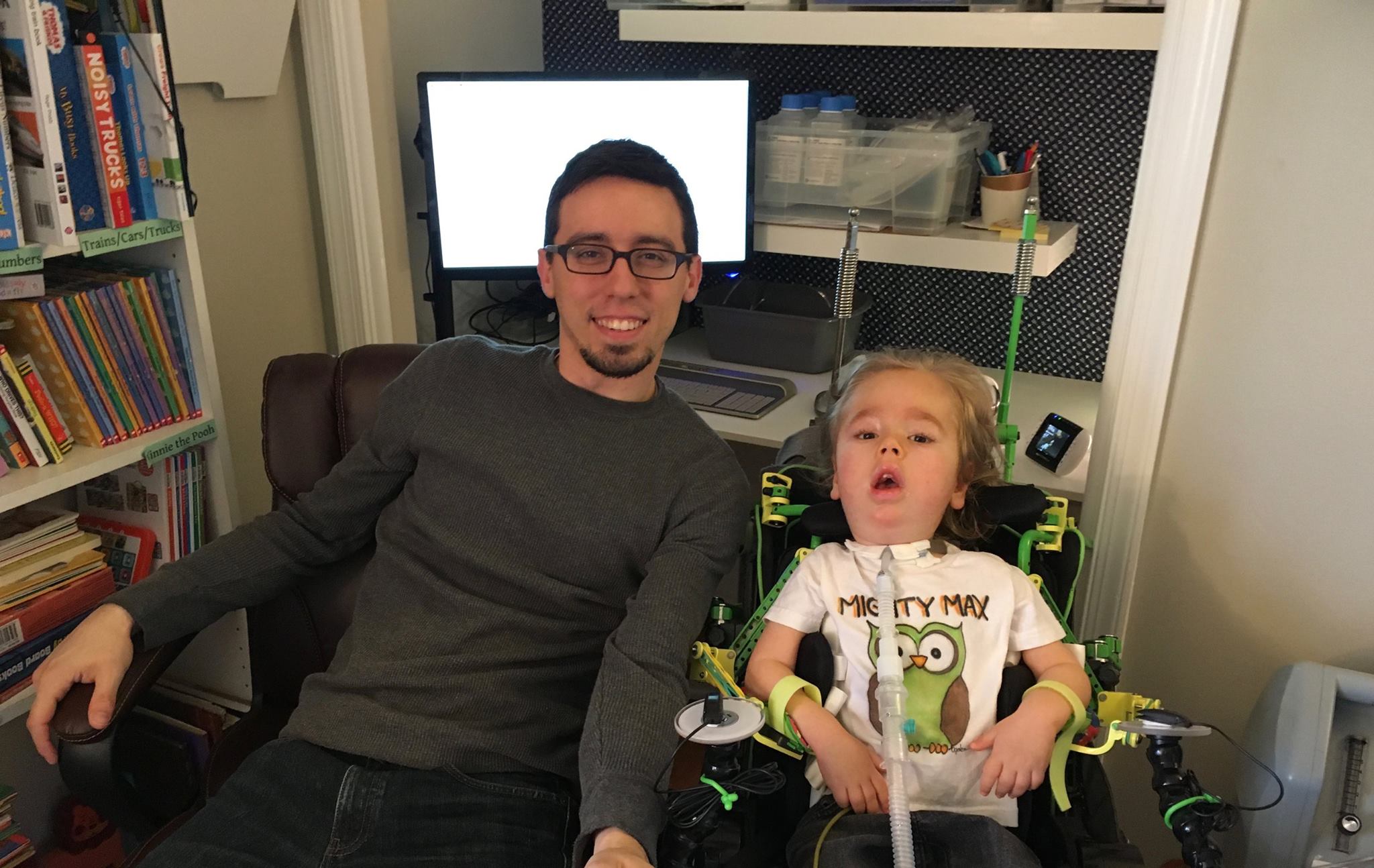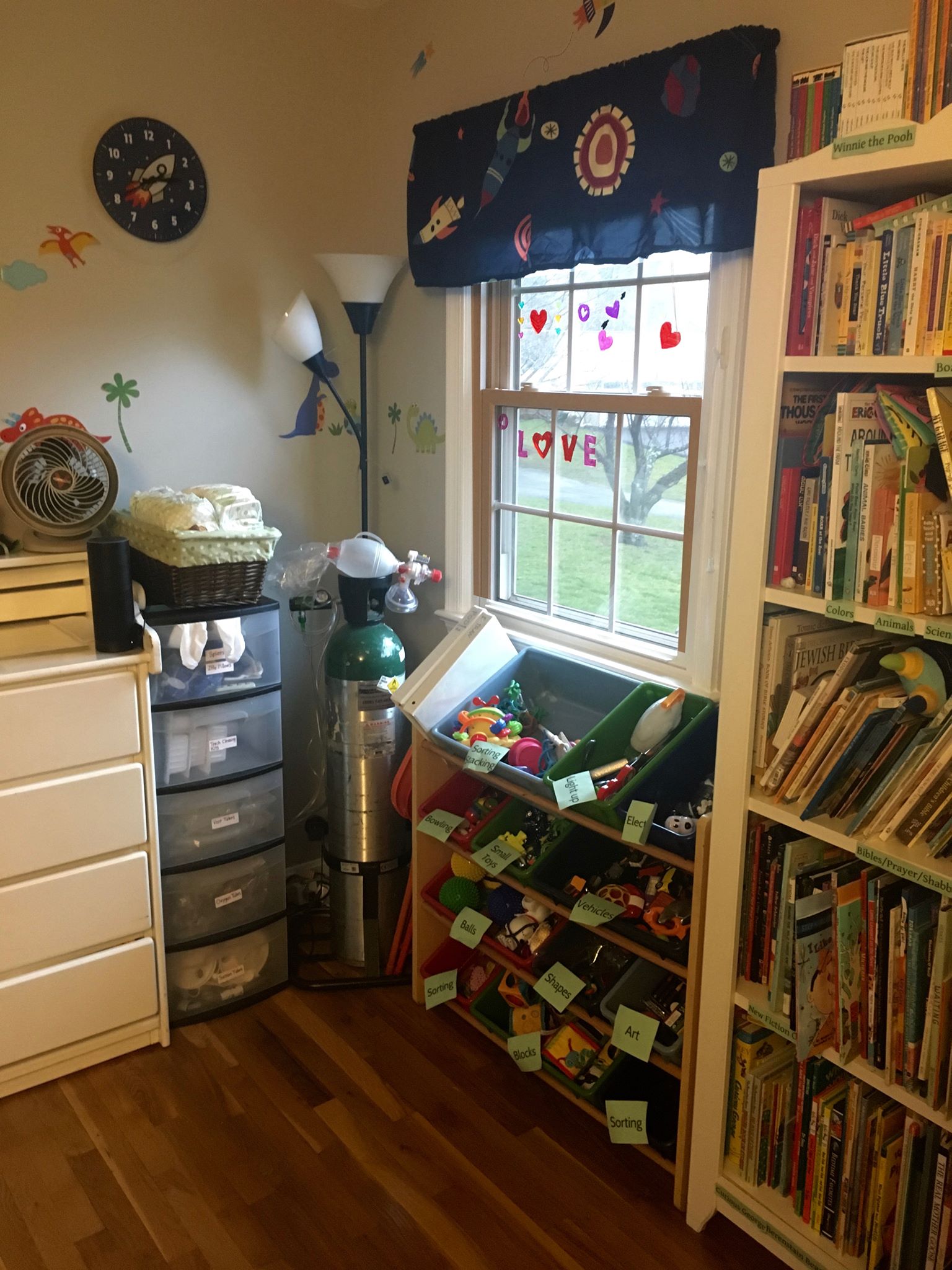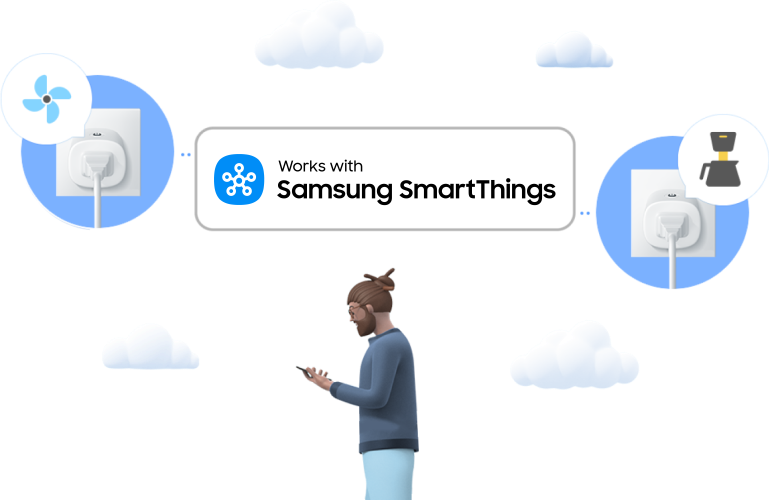“Samsung SmartThings lets my son control his room with his eyes.”
Do you have a SmartThings story to tell? If so, drop us a line and we’ll highlight it on the blog!
“Some people see home automation as a convenience. But for my son Max (and many other kids and adults with degenerative neuromuscular diseases), consumer home automation systems like Samsung SmartThings are changing what it looks like to live with a disability.

“Meet Max. At 2 months, he was diagnosed with spinal muscular atrophy, a motor neuron disease like ALS but in children. The doctors explained to us that his “floppiness” wasn’t going to go away—that the absence of a key protein was causing his muscles to atrophy and would lead to difficulty with eating and breathing. A simple cold could be life-threatening.
“Fast forward two years (and a lot of hard work and loving support), and Max is thriving at home. He has round-the-clock nursing care and therapy visits in our home daily. To communicate, he uses facial expressions and basic vocalizations. Cognitively, he is unaffected by SMA, and we are teaching him to use hand switches or his eyes to control a speech-generating AAC device so that he can express more complex ideas. His favorite things are playing music and watching Mister Rogers’ Neighborhood.
“We are always on the lookout for ways to empower Max. When a co-worker told me that Samsung SmartThings could be integrated with Amazon Echo for voice control, a light bulb went on… quite literally.
“This video shows how I set up my son’s speech program to trigger Samsung SmartThings home automation events via the Amazon Echo. A floor lamp in my son’s bedroom is connected to a SmartThings Outlet. When Max selects “Alexa” followed by “turn on the light,” the Amazon Echo issues a command to the SmartThings hub, and the light turns on. A second option allows him to tell Alexa, “turn off the light.” I’m sure I don’t need to tell you how much Max loves this!

“It’s true that home automation systems existed prior to Samsung SmartThings, but they were expensive custom solutions only available to a few. Now with SmartThings, anyone can go to their local electronics store or place an order online and have a working home automation setup in just a few hours.
“It’s also true that many AAC devices can be programmed to control TVs, fans, and lights using IR signals (the way a TV remote does). But what I love about the Amazon Echo integration is that Max gets to interact with the SmartThings in our home the same way everyone else does. Not only does this create more incentive for us to use and improve our home automation setup; to me, it’s a glimpse of how the stigmas associated with disabilities give way to the beauty of inclusion when spaces are reimagined to be universally accessible to people of all shapes, sizes, and abilities.
“The next SmartThings project we have planned is hooking up the blinds in Max’s room so that he can open the window in the morning to let in the sunshine. In a world that can be very dark, little things like this are shining a light towards a bright future for Max and his friends living with SMA. Thanks, Samsung!” —Yahnatan




